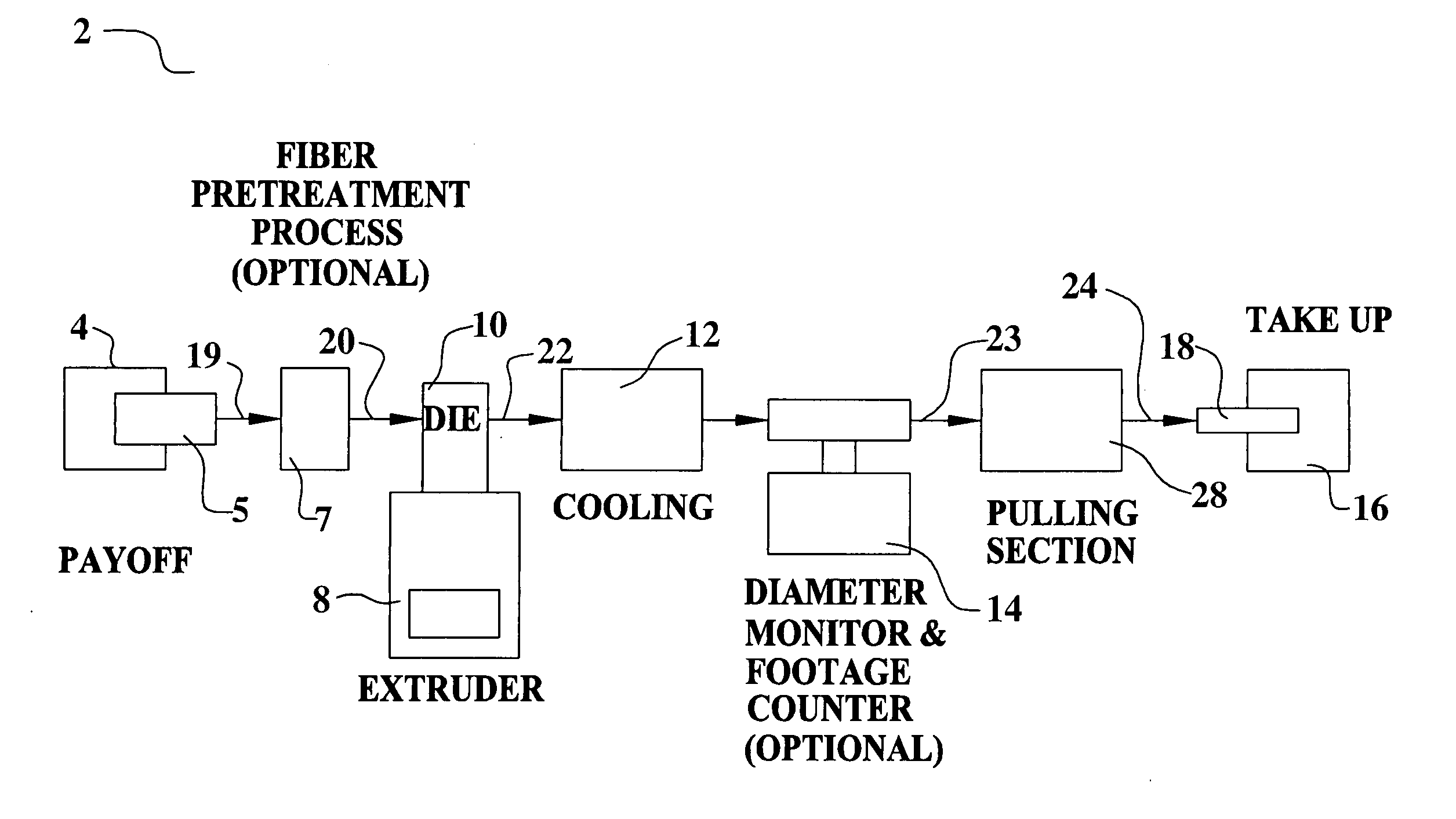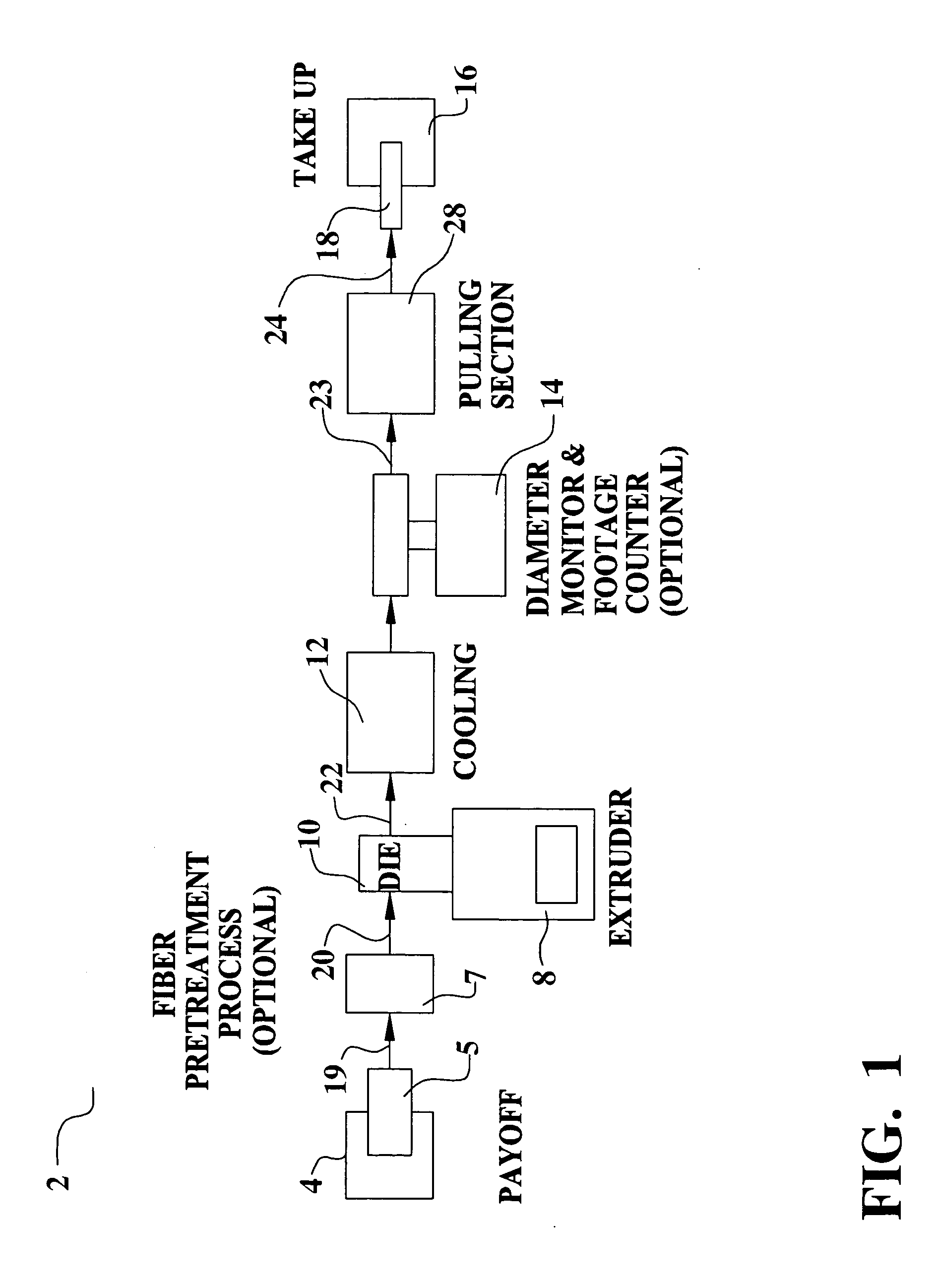Resin-coated micron conductive fiber wiring
a technology of conductive fibers and conductive fibers, applied in the direction of insulated conductors, cables, conductors, etc., can solve the problems of metal-based elements, resistive heating elements currently used in the art have disadvantages, and lose density such as it rises, and achieves high conductive material performance and low cost
- Summary
- Abstract
- Description
- Claims
- Application Information
AI Technical Summary
Benefits of technology
Problems solved by technology
Method used
Image
Examples
embodiment 500
[0076] Referring now to FIG. 10, an embodiment 500 of the present invention is illustrated. An antenna 520 for a transceiver device 510 is formed from resin-coated, micron conductive fiber wiring 520 is shown. A transceiver device, such as a cellular or mobile telephone, a wireless computer, a walkie-talkie, or the like, requires an antenna structure to transmit and receive signals by electromagnetic energy. In addition, receiver devices, such as radios or televisions, or transmitting devices, such as beacons, require antenna structures. The resin-coated, micron conductive fiber wiring 520 of the present invention can be formed into the required antenna 520 shapes and / or sizes to create the desired resonance frequency characteristics. The resin-coated, micron conductive fiber wiring 520 demonstrates excellent absorption and / or transmission of RF energy. The low resistivity of the resin-coated, micron conductive fiber wiring 520 provides substantially excellent performance.
[0077] In ...
embodiment 550
[0078] Referring now to FIG. 11, an embodiment 550 of the present invention is illustrated. The resin-coated, micron conductive fiber wiring 560 is applied to a high voltage power line system 550. In a high voltage power line system 550, large cables 560 are suspended high above the ground via towers 570. The electrical power is typically transmitted at a large voltage such that the current loading in the wiring 560 is reduced and the electrical loss due to I 2R is reduced. The resin-coated, micron conductive fiber wiring 560 presents several advantages in this application. First, the micron fiber is lower in weight than copper or aluminum cabling and yet is capable of low resistance. As a result, the weight loading on the towers 570 is reduced. In addition, the resin-coated, micron conductive fiber wiring 560 can be made substantially stronger by winding fiber bundles around a center core as is shown in FIG. 12 and is described below. For example, a center core of glass fiber or of...
embodiment 800
[0083] Referring now to FIG. 16, an embodiment 800 of the present invention is illustrated. Several alternative cross sectional shapes of resin-coated, micron conductive fiber wiring are shown. In one embodiment, a rectangular array 810 of fiber is surrounded with a resin-based coating 820 to make a rectangular cross section. In another embodiment, a star array 830 of fiber is surrounded with a resin-based coating 840 to form a star cross section. In another embodiment, a corrugated cross section of resin-based coating 860 is formed around an array 850 of fiber.
PUM
| Property | Measurement | Unit |
|---|---|---|
| diameter | aaaaa | aaaaa |
| diameter | aaaaa | aaaaa |
| thickness | aaaaa | aaaaa |
Abstract
Description
Claims
Application Information
 Login to View More
Login to View More - R&D
- Intellectual Property
- Life Sciences
- Materials
- Tech Scout
- Unparalleled Data Quality
- Higher Quality Content
- 60% Fewer Hallucinations
Browse by: Latest US Patents, China's latest patents, Technical Efficacy Thesaurus, Application Domain, Technology Topic, Popular Technical Reports.
© 2025 PatSnap. All rights reserved.Legal|Privacy policy|Modern Slavery Act Transparency Statement|Sitemap|About US| Contact US: help@patsnap.com



